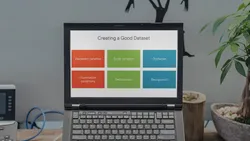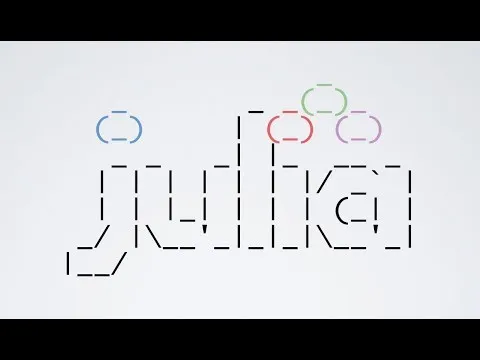
The Julia Computer Language 
This course introduces the Julia computer language, a powerful tool for medical statistical analysis. It covers topics such as distributions, the juliabox notebook, and coding basics. Learners will gain an understanding of how to use Julia to create programs for medical statistical analysis. ▼
ADVERTISEMENT
Course Feature
![]() Cost:
Cost:
Free
![]() Provider:
Provider:
Youtube
![]() Certificate:
Certificate:
Paid Certification
![]() Language:
Language:
English
![]() Start Date:
Start Date:
On-Demand
Course Overview
❗The content presented here is sourced directly from Youtube platform. For comprehensive course details, including enrollment information, simply click on the 'Go to class' link on our website.
Updated in [February 21st, 2023]
Julia for simple medical statistical analysis.
Using Distributions in Julia.
Lesson 01_01 Introducing Julia.
Lesson 01_02 Introducing the juliabox notebook.
Lesson 01_03 Something other than Hello World.
Lesson 01_04 How to code 1 plus 1 in Julia.
Lesson 01_05 A more functional way of coding 1 plus 1.
Lesson 01_06 Multiplication before addition.
Lesson 01_07 Rounding and common divisors and multiples.
Lesson 01_08 Trigonometric functions and sign values.
Lesson 01_09 Comparing values.
Lesson 01_10 Roots exponentials and logarithms.
Lesson 01_11 Complex numbers.
Lesson 01_12 Plotting with Gadfly.
Lesson 02_01 Introducing the concept of types.
Lesson 02_02 Super and subtypes.
Lesson 02_03 Abstract and concrete types.
Lesson 02_04 Creating your own types.
Lesson 03_01 Ternary operators.
Lesson 03_02 Boolean switching.
Lesson 03_03 For loops.
Lesson 03_04 If statements.
Lesson 03_05 Combining for loops and if statements using continue.
Lesson 03_06 Comprehensions.
Lesson 03_07 Collections.
Lesson 03_09 While statements.
Lesson 04_01 Introduction to Julia functions.
Lesson 04_02 Single expression functions.
Lesson 04_03 Multiple expression functions.
Lesson 04_04 Arguments with default values and keyword arguments.
Lesson 04_05 Functions with a variable number of arguments.
Lesson 04_06 Passing arrays as functions.
Lesson 04_07 Type parameters.
Lesson 04_08 Stabby functions and do blocks.
Lesson 04_09 Functions as arguments and nested functions.
Lesson 04_10 Multiple dispatch.
Lesson 05_01 Collections.
Lesson 05_02 Arrays.
Lecture 05_03 Modifying arrays.
Lesson 05_04 Matrices.
Lesson 05_05 Sets.
Lesson 05_06 Tuples.
Lesson 05_07 Dictionaries.
Lesson 06_01 Strings.
Lesson 06_02 Introduction to strings.
Lesson 06_03 Substrings.
Lesson 06_04 Characters.
Lesson 06_05 Splitting and combining strings.
Lesson 06_06 Converting between numbers and strings.
Lesson 06_07 Replacing sections of a string.
Lesson 06_08 Regular expressions.
Package Gadfly 01 Introduction to Julia Gadfly.
Package Gadfly 02 Layers Themes Titles Labels and Saving.
Package Gadfly 03 DataFrame Data and Boxplots.
Package Gadfly 04 Density plots Histograms and Violin plots for @JuliaLanguage.
Package Gadfly 05 QQ plots for @JuliaLanguage.
Package Gadfly 06 Scatter plots Lines More examples.
Project 1 Section 1 Part 1.
Project 1 Section 1 Part 2 The research question.
Project 1 Section 1 Part 3 Literature search.
Project 1 Section 1 Part 4 Study type.
Project 1 Section 1 Part 5 Variables required to answer research question.
Project 1 Section 1 Part 6 Stating the research hypotheses.
Project 1 Section 1 Part 7 Protocol and ethics.
Project 1 Section 1 Part 8 Data collection design.
Project 1 Section 1 Part 9 Google forms.
Project 1 Section 2 Part 1.
Project 1 Section 2 Part 2.
Project 1 Section 2 Part 3.
Project 1 Section 2 Part 4.
Project 1 Section 2 Part 5.
Project 1 Section 2 Part 6.
Project 1 Section 2 Part 7.
(Please note that we obtained the following content based on information that users may want to know, such as skills, applicable scenarios, future development, etc., combined with AI tools, and have been manually reviewed)
What skills and knowledge will you acquire during this course?
Completing this course will provide students with the skills and knowledge to use the Julia computer language for simple medical statistical analysis. Students will learn how to use distributions in Julia, create their own types, use ternary operators, Boolean switching, for loops, if statements, comprehensions, collections, arrays, matrices, sets, tuples, dictionaries, strings, substrings, characters, splitting and combining strings, converting between numbers and strings, replacing sections of a string, regular expressions, and how to use the Gadfly package. Additionally, students will gain experience in research design, including formulating a research question, conducting a literature search, determining the study type, identifying the variables required to answer the research question, stating the research hypotheses, protocol and ethics, and data collection design.
How does this course contribute to professional growth?
This course provides a comprehensive introduction to the Julia computer language, which is used for simple medical statistical analysis. Through the lessons, students will learn how to code in Julia, use distributions, create their own types, use ternary operators, for loops, if statements, collections, strings, and more. Additionally, the course covers the use of the Gadfly package for plotting data. By completing this course, professionals will gain a better understanding of the Julia language and its applications, which will contribute to their professional growth.
Is this course suitable for preparing further education?
This course provides a comprehensive introduction to the Julia language and its applications, and could be suitable for preparing for further education.
Course Provider

Provider Youtube's Stats at AZClass
Discussion and Reviews
0.0 (Based on 0 reviews)
Explore Similar Online Courses

Build an Object Detection Model with Python

Make it Snow: A Beginners Guide to Crochet Snowflakes

Python for Informatics: Exploring Information

Social Network Analysis

Introduction to Systematic Review and Meta-Analysis

The Analytics Edge

DCO042 - Python For Informatics

Causal Diagrams: Draw Your Assumptions Before Your Conclusions

Whole genome sequencing of bacterial genomes - tools and applications

Intro to the Queryverse a Julia data science stack

Intro to Julia tutorial (version 10)


Start your review of The Julia Computer Language